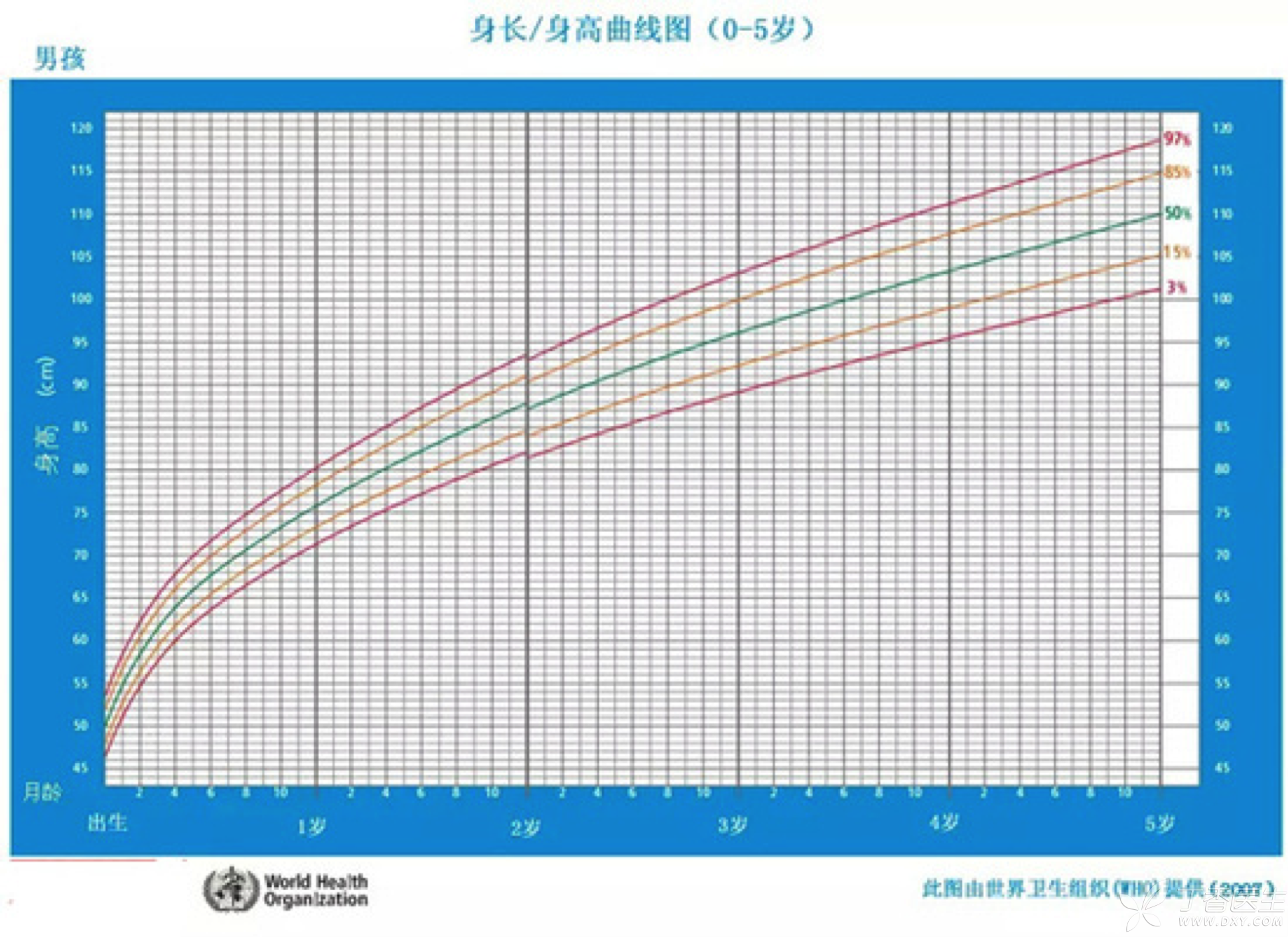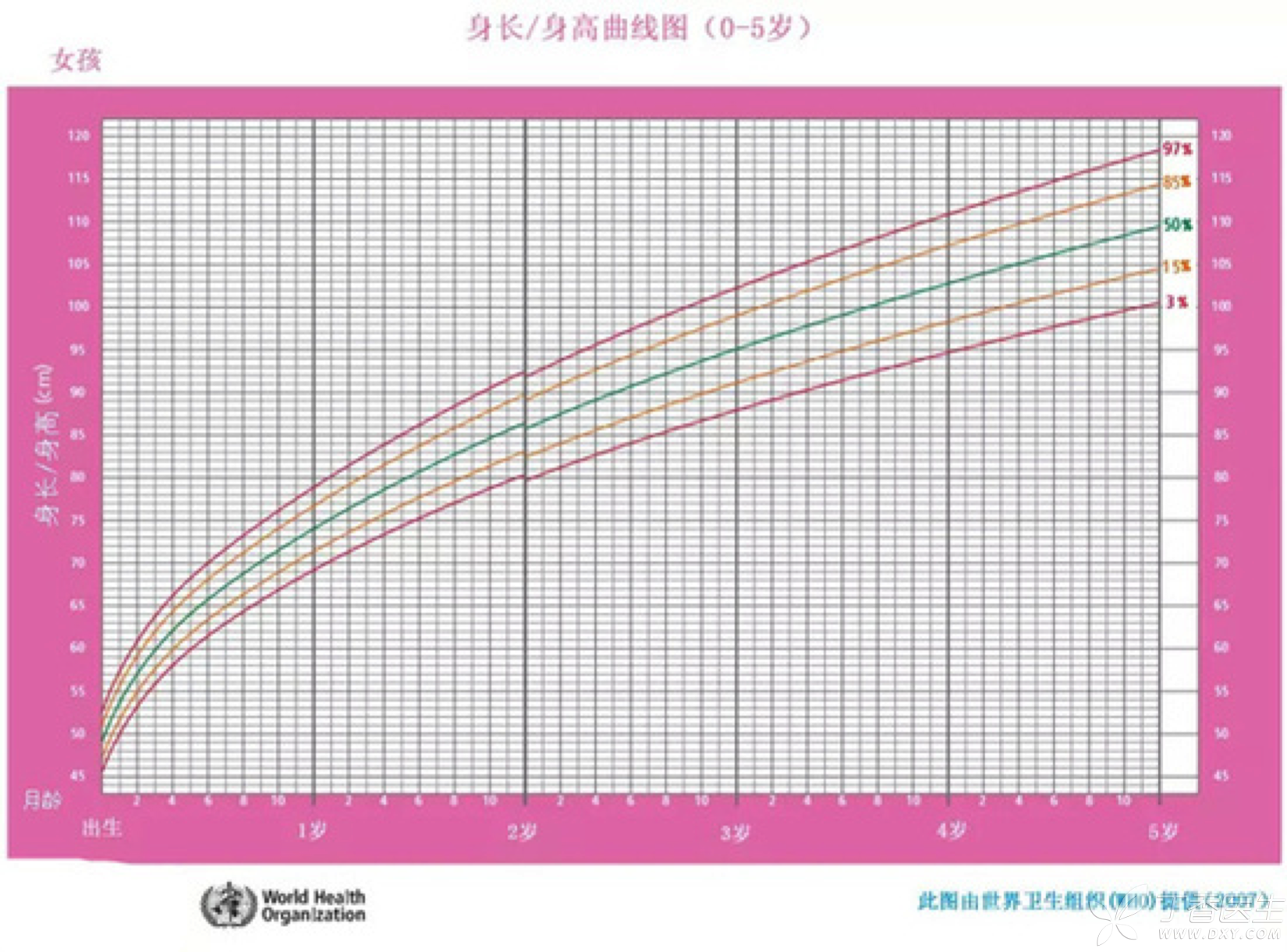
Although the baby is [there is no worry about growth when there are seedlings], parents, without exception, all hope to have more advantages in the height of the child.
Looking at my baby every day, I hope to grow taller quickly, but looking at the numbers marked on the wall height meter, it seems that there has been no big change.
Compared with Xiaoming Erbao and others in the next house, I feel even more sad: My parents are slow. Is it stunted or not? Do you want to see a doctor?
Today, Dr. Clove invited a licensed doctor to tell us when we need to see a doctor.
The annual increase is less than these, and you need to see a doctor.
Parents’ anxiety can be understood. In the era of fear of dwarfism, more and more parents begin to attach importance to the height of their babies. However, it is not that parents [think they grow slowly] or that children really grow slowly. There is also a standard for children to be stunted and need to see a doctor.
The same infant period every day is the fastest growing period in one’s life. Compared with the growth rule of children from birth to the age of three, it is roughly as follows:
(The following is the average height growth, do not force comparison, only for reference)
0 ~ 3 months: 3.5 cm/month
4 ~ 6 months: 2 cm/month
7 ~ 9 months: 1.5 cm/month
10 ~ 12 months: 1 cm/month
1 ~ 2 years old, 10 ~ 11 cm/year
> 2 years old, 4 ~ 7 cm/year
Generally, the height of babies under 3 years old increases by about 7 cm/year every year, from 3 years old to puberty by 4 ~ 5 cm/year, and puberty by about 5.5 ~ 6 cm/year.
If the above values are not reached for one year, it may really be growth retardation. At this time, it is recommended to take the child to the hospital.
Does the baby grow slowly? This [line] to tell you

Will it be too late to find that one year old is not enough?
Is there a better way to judge whether the baby’s height development is normal?
Many parents only remember that the size of clothes changed slowly, When I think of it, I don’t know how long the baby was born, how long it was every month, and even how many centimeters it is now. Here, I recommend a reliable recording tool and growth graph, through which you can clearly know whether the baby’s growth has [risen] or [fallen].


What do you think:
The abscissa at the bottom represents the month of the baby. Each small cell represents a month, and the ordinate beside it represents the height (or weight). When in use, first find the current age at the bottom, find the corresponding height in the ordinate, and then draw a small dot at the intersection of the two. After a period of monitoring, connecting these small dots into a line is the growth curve of the baby.
How to compare:
Only when there is comparison can we see the difference. The curve drawn according to the baby’s height is the curve of our baby. Compare this curve with the 5 curves on the figure to evaluate the baby’s development.
The bottom one reads the 300 th (or-2SD), which you can understand as randomly selecting 100 children to line up from short to high. The height of the third place is this curve.
Similarly, the 97th percentile (or + 2SD) is the height curve of the 97th child, and the 50th percentile (or 0SD) represents the average.
Generally, we think that height between the 3rd and 97th percentiles is the normal range. If it is less than the 3rd percentile or greater than the 97th percentile, it is necessary to check the reason.
In addition, normal growth always follows a certain percentile curve. If there is a long [deviation], it means that there may be problems in growth and attention should also be paid to it.
If these four points are done well, the baby will grow taller.

The baby’s height is determined by seven days and three points by hard work. Although heredity occupies a big decisive factor, it is possible to do so if you want to give your baby [help] the day after tomorrow:
1. Balanced nutrition
Most of the growth retardation in infants is related to nutrition. The smaller the baby, the greater the importance of nutrition to height.
Inadequate feeding and improper feeding affect weight gain at the beginning. If they are not corrected in time, height growth will also begin to slow down.
I give you the following suggestions on baby feeding:
- Breastfeeding should be carried out for 6 months as far as possible, and supplementary food should be added in time for 4-6 months. Supplementary food for 1 year old should be supplemented by milk. Add supplementary foods from less to more, from fine to coarse, from thin to thick, from one to many, pay attention to the nutrition collocation to be comprehensive and balanced; Regular, quantitative and fixed-point eating, forming regular and good eating habits and behaviors; Diversified meals, pay attention to color, aroma and stimulate baby’s appetite.

Step 2: Reasonable Exercise
Life lies in exercise. On the premise of ensuring sufficient nutrition supply, scientific and reasonable exercise can balance the metabolism of calcium and phosphorus in the whole body, accelerate the deposition of minerals in bone, promote gastrointestinal peristalsis and digestion, and also stimulate the secretion of growth hormone, thus maximizing the genetic potential.
- Babies under 1 year old suggest combining active and passive movements, such as looking up, crawling, turning over, etc. 2 ~ 3 babies are suitable to choose some activities that can help improve the coordination ability of sports. During this period, the children’s balance ability and self-protection ability are poor. They can choose some simple sports such as crawling, brisk walking, shooting the ball, etc.

Step 3: Get plenty of sleep
The influence of sleep on height mainly works through growth hormone. The secretion of growth hormone during the day is very small, most of which is secreted after falling asleep, and usually reaches a peak about 1 ~ 2 hours after falling asleep. Therefore, too little sleep time will affect the secretion of growth hormone.
Generally speaking, newborns need to sleep for about 21-22 hours a day, 14-16 hours a day for 2-12 months, 12-14 hours for 2-3 years old, and 11-12 hours for 4-6 years old.
If you want to give Eva [height], can you take hormone and health care products?

So far, the State Food and Drug Administration has never approved any products with [increasing] function. Even some products are added with sex hormones. Although they can increase the height of children in a short period of time, this is at the expense of accelerating epiphyseal healing, which affects the final height of children.
Other parents asked, Some people said that growth hormone can be given to Eva to increase. Can this be tried?
The main purpose of growth hormone is to treat [short stature], not [increase]. This determines that growth hormone has its indications and is not available to everyone.
In addition, like other drugs, it has certain risks of adverse reactions. It must be used under the guidance of doctors and regularly followed up and monitored during treatment. Therefore, it is not the growth retardation caused by diseases, so let the children grow up naturally and healthily.
